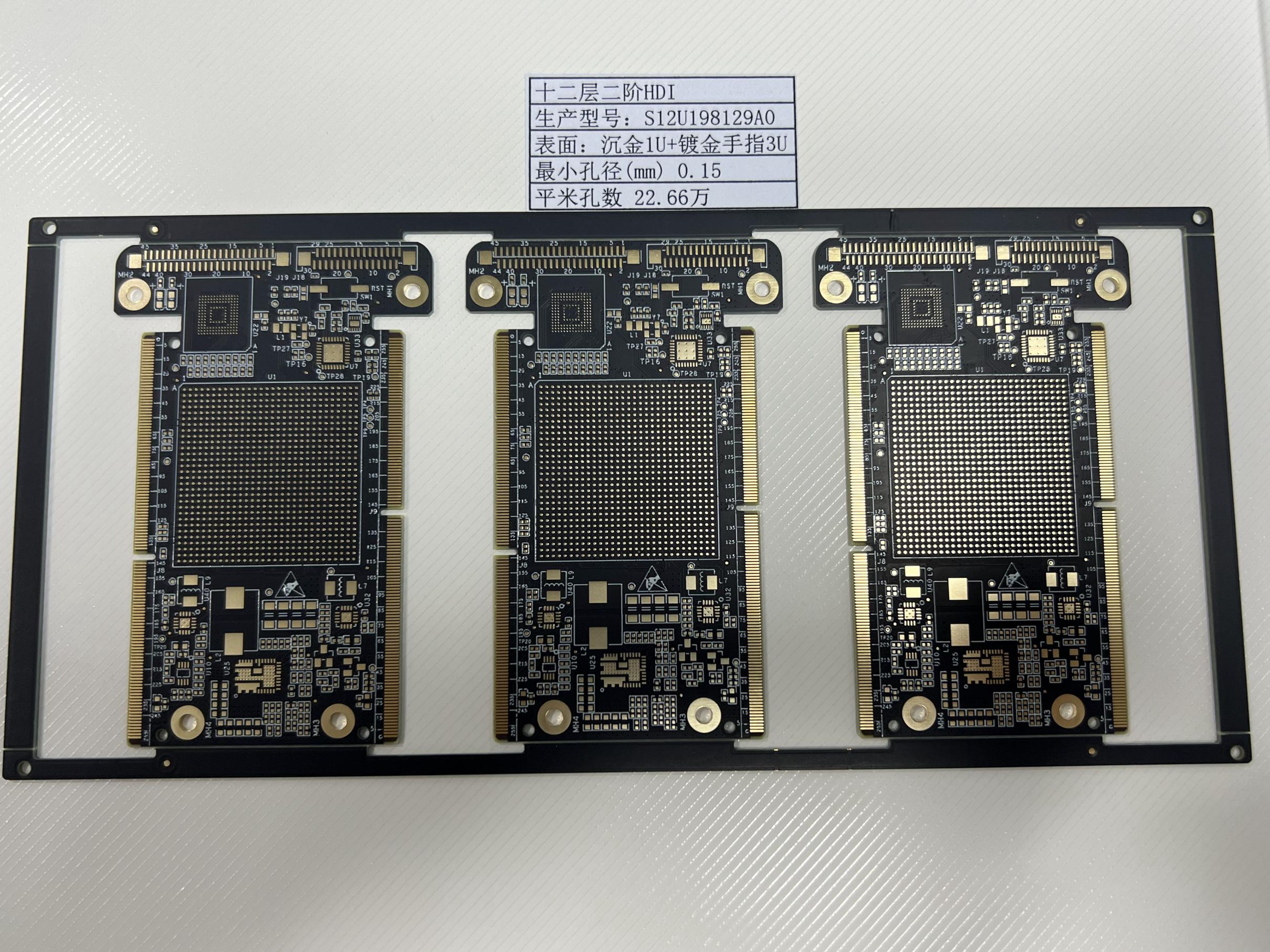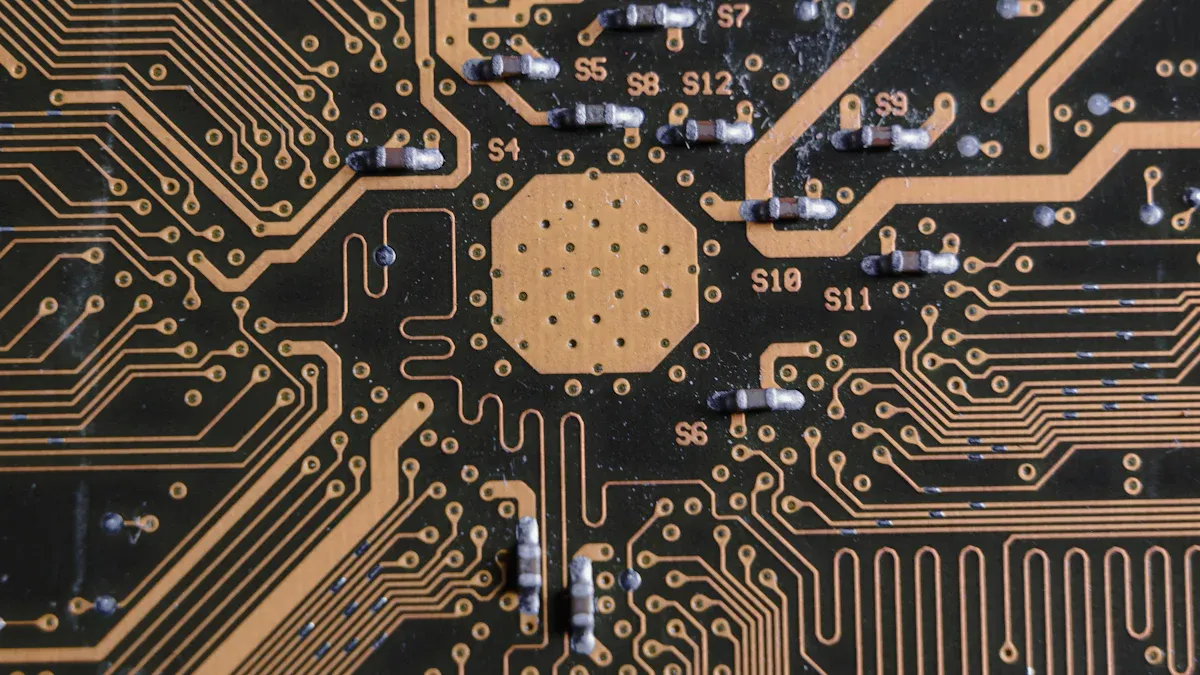OSP Finish in PCB Manufacturing: Benefits, Limitations, and Best Practices for Electronics Manufacturers

Have you ever thought about why PCBs work so well? One key reason is the surface finish. Among many choices, OSP finish in PCB manufacturing is special. This coating keeps copper pads from rusting and helps with soldering. It is cheap, lead-free, and good for the environment, making it great for today’s electronics.
Key Takeaways
OSP finish is a cheap and eco-friendly option for PCBs. It has no lead and costs less than finishes like ENIG. This makes it great for projects with tight budgets.
Handling and storing OSP boards carefully is very important. Wear gloves, keep them dry, and avoid water to protect them. This helps keep them easy to solder and prevents harm.
OSP finish makes soldering better, especially for tricky designs. Its thin coating helps connections and lowers signal problems. This makes it good for modern gadgets.
Understanding OSP Finish in PCB Manufacturing

What Is OSP Finish?
OSP stands for Organic Solderability Preservative. It is a surface finish used in making PCBs. A thin organic layer is added to protect copper pads from rusting. This layer keeps the copper ready for soldering during assembly. OSP is lead-free and safe for the environment, which makes it popular. The process is simple and cheap, using a dipping method. It doesn’t need fancy or costly tools, so it works for big and small PCB projects.
How OSP Finish Enhances PCB Performance
OSP helps PCBs work better by improving soldering. The organic layer stops oxygen from damaging the copper surface. This keeps the copper able to stick to solder, creating strong joints. Strong solder joints make devices last longer. OSP also gives a smooth surface, which is great for tiny parts and crowded PCBs. Its thin layer reduces signal problems, helping high-speed circuits work well. These features make OSP great for complex boards and portable gadgets.
Applications of OSP Finish in Modern Electronics
OSP is used in many electronics because it’s useful and affordable. Here are some examples:
Consumer Electronics: Phones, tablets, and laptops use OSP for good soldering and low cost.
Wearable Technology: Thin coatings work well for small devices like smartwatches.
Automotive Electronics: Sensors and car systems need OSP for strong connections.
Industrial Control Systems: OSP ensures accurate connections in factory machines.
Telecommunications Equipment: Routers and switches use OSP for crowded parts.
Application Type | Key Features | Cost Comparison |
|---|---|---|
Cheap, great soldering, needs careful handling | 30-50% of ENIG cost | |
High-frequency applications | Less signal loss, tiny parts, reliable for fast circuits | OSP or Immersion Silver |
These examples show how OSP helps modern electronics while saving money.
Benefits of OSP Finish for PCB Manufacturing
Cost-Effective Surface Finish for PCBs
Choosing OSP finish saves money while protecting copper pads. It uses a simple dipping method, avoiding costly tools. This makes it great for small and large PCB projects. OSP-coated boards cost much less than finishes like ENIG or HASL.
For instance, OSP is 30-50% cheaper than ENIG. It’s affordable but still offers good soldering and reliable performance. This mix of low cost and quality makes OSP popular for budget-friendly electronics.
Environmentally Friendly and Lead-Free Option
If you care about the planet, OSP finish is a smart pick. It’s lead-free and meets rules like RoHS. Unlike HASL, which has lead, OSP uses safe organic preservatives.
Here’s a comparison of surface finishes:
Surface Finish | Lead-Free | Environmental Impact | Maintenance | Robustness |
|---|---|---|---|---|
OSP | Yes | Eco-friendly | Low | Less durable than HASL |
HASL | No | Moderate | Moderate | Stronger than OSP |
ENIG | Yes | Moderate | Low | Medium durability |
By picking OSP, you help reduce harmful waste while keeping good solderability. It’s a responsible choice for eco-conscious manufacturers.
Superior Solderability for Complex Assemblies
OSP finish improves soldering, especially for tricky PCB designs. Its organic layer stops copper pads from rusting. This helps solder stick well, creating strong connections.
OSP works great with flux, ensuring smooth soldering on pads and vias. This is important for lead-free projects, where soldering can be hard. Whether your board has tiny parts or dense layouts, OSP ensures reliable soldering.
Ideal for High-Density PCB Designs
Modern gadgets need small and efficient designs, and OSP finish helps. Its thin layer creates a flat surface, perfect for crowded PCBs. OSP also reduces signal loss, making it good for fast circuits.
For example, smartwatches benefit from OSP’s ability to handle tiny parts. Routers and switches also use OSP for its soldering and low cost. OSP ensures strong performance in compact and complex designs.
Tip: Handle and store OSP-coated boards carefully to keep solderability intact.
Limitations of OSP Finish in PCB Applications
Sensitivity to Storage and Handling
OSP-coated PCBs need careful handling. The thin layer can easily get damaged by moisture or scratches. Even sweat from hands can harm the coating, so wearing gloves is important. Storing these boards the wrong way can lower their solderability. To keep them in good shape, store OSP boards in a dry and controlled place. This helps protect the coating until it’s time for soldering.
Shorter Shelf Life Compared to Other Surface Finishes
OSP finishes don’t last as long as other finishes. Older versions lasted only 3-6 months and handled few heat cycles. Newer OSP types last up to a year and can handle more heat cycles. Still, they don’t last as long as ENIG or ENEPIG finishes. If you need to store PCBs for a long time, OSP might not be the best option.
OSP has improved but is still less durable for long storage.
Challenges in Multi-Layer PCB Manufacturing
Making multi-layer PCBs with OSP is hard. The thin coating can scratch, exposing copper underneath. Moisture can also cause problems during soldering. If the flux doesn’t remove the OSP layer properly, soldering may fail. These issues make OSP less suitable for complex multi-layer designs.
OSP’s water-based coating is easy to damage.
Gloves and careful handling help avoid contamination.
Considerations for Rework and Repairs
Fixing OSP-coated boards can be tough. The coating weakens after many heat cycles, making soldering harder. This makes it tricky to replace or fix parts without harming the board. If your project needs frequent repairs, OSP might not work well. Planning for fewer repairs can reduce these problems.
Tip: Choose OSP for simple projects with little need for repairs.
Best Practices for Using OSP Finish in PCB Manufacturing
Proper Storage and Handling Techniques
To keep OSP-coated boards in good shape, follow careful rules. The thin organic layer can be harmed by moisture, scratches, or dirt. Bad handling can ruin soldering and shorten the board’s life.
Here are some easy tips to store and handle them safely:
Keep OSP boards in a dry, cool place.
Don’t touch with bare hands; wear gloves to avoid dirt.
Use anti-static bags to stop static electricity damage.
Handle gently to prevent scratching the surface.
These steps help OSP finishes last longer and work well during assembly.
Tip: Set up safe storage before adding OSP to boards. This lowers the risk of damage during production.
Ensuring Compatibility with PCB Assembly Processes
OSP finishes need to match your assembly process for the best results. The organic layer works with solder flux, so they must fit together for strong soldering.
You can make sure they work by:
Picking flux made for OSP finishes.
Testing heat levels to avoid burning the coating.
Using machines for accurate soldering.
These actions protect the OSP layer and improve soldering. Adjusting your process for OSP ensures strong connections and great electronics.
Quality Control Measures for OSP-Coated PCBs
Checking quality is key to keeping OSP-coated boards working well. Regular checks and smart tools can find problems early.
Surface Finishing Process | Description |
|---|---|
Hot Air Solder Leveling (HASL) | Shiny finish with metallic look. |
Electroless Nickel Immersion Gold (ENIG) | Gold layer for better soldering. |
Organic Solderability Preservative (OSP) | Dull surface with no bright color. |
Includes strict checks to spot issues. | |
AI Defect Detection | Uses tools like AOI and ICT for better quality. |
Using tools like AOI (Automated Optical Inspection) and ICT (In-Circuit Testing) ensures good quality. These tools find problems like broken circuits or bad soldering early. Fixing these saves time and money.
Note: Regular checks stop expensive fixes and keep boards reliable.
Selecting the Right Applications for OSP Finish
Picking the right uses for OSP finish gives the best results. This finish works well when cost and performance matter most.
Good uses include:
RF Boards: OSP keeps PCBs ready for high-frequency circuits.
Consumer Electronics: Phones and tablets use OSP for low cost and good soldering.
Wearable Technology: Thin layers are great for small gadgets like smartwatches.
Automotive Electronics: Sensors and systems need OSP for strong soldering.
OSP protects copper from rust, keeping it working for a long time. Choosing the right uses helps you enjoy OSP’s benefits while avoiding its downsides.
Why Choose LT CIRCUIT for OSP Finish in PCB Manufacturing
LT CIRCUIT’s Expertise in Surface Finishes
LT CIRCUIT is a top choice for surface finishes. They know OSP and other advanced coatings very well. Their team makes sure every PCB gets the best finish. Years of experience help them balance cost, strength, and soldering ease.
They use modern methods to apply OSP finishes with great care. This keeps the quality steady for all boards. Whether your board is simple or complex, they deliver strong results. Their skills ensure your boards meet top industry standards.
Advanced PCB Solutions Tailored to Your Needs
LT CIRCUIT offers solutions made just for your projects. They provide custom PCB services to match your needs. Options include solder mask colors, testing, and finishes like OSP.
Their team listens to your goals and suggests the best materials. They help your boards work well while saving time and money. This personal approach ensures great results for your designs.
Pro Tip: Share your project details early with LT CIRCUIT. This helps them find the best solutions for your design.
Commitment to Quality and Innovation in PCB Manufacturing
LT CIRCUIT focuses on quality and new ideas in PCB making. They use tools like AOI and ICT to check each board. These checks make sure your boards are ready to use without problems.
They also bring the newest technologies to their work. Their processes keep improving to give you better products. Choosing LT CIRCUIT means working with a company that values quality and stays ahead in the field.
Note: LT CIRCUIT’s focus on quality ensures your boards work well in any project.
OSP finish is affordable, eco-friendly, and great for soldering. It’s a smart option for making PCBs. But, it needs careful handling to stay reliable. Working with LT CIRCUIT gives you top-quality PCB solutions. They offer custom help with expert knowledge and new ideas.
FAQ
Why is OSP finish good for the environment?
OSP uses safe organic materials, not harmful metals like lead. This makes it better for nature and follows rules like RoHS.
Can OSP finish work with fast circuits?
Yes, OSP’s thin coating reduces signal problems. It is great for fast circuits in gadgets like routers and telecom devices.
How should you store OSP-coated PCBs?
Keep them in a cool, dry spot. Use anti-static bags and gloves to avoid dirt or damage to the coating.
See Also
Exploring HASL Finish in PCB Production: Benefits and Uses
Understanding the Steps Involved in PCB Production
The Role of HASL Finish in PCB Production and Quality
Expert Techniques for Immersion Tin Finish in PCB Design
Essential Strategies for Achieving Quality Control in PCB Production
